World's Most Beautiful Buildings Designed According To Math Principles
Aadhya Khatri - Feb 11, 2020

It might come as a surprise for you that architecture and math have a close correlation. Read on to find out how
- A Math Formula Tells Us How Long Everything Will Live
- Shakuntala Devi Awarded Guinness World Records’ Fastest Human Computation Certificate After 40 Years
- Murderer Taught Himself Higher Math In Prison And Solved A Age-Old Math Problem
It might come as a surprise for you that architecture and math have a close correlation. Read on to find out how.
The Great Pyramid of Giza, Egypt
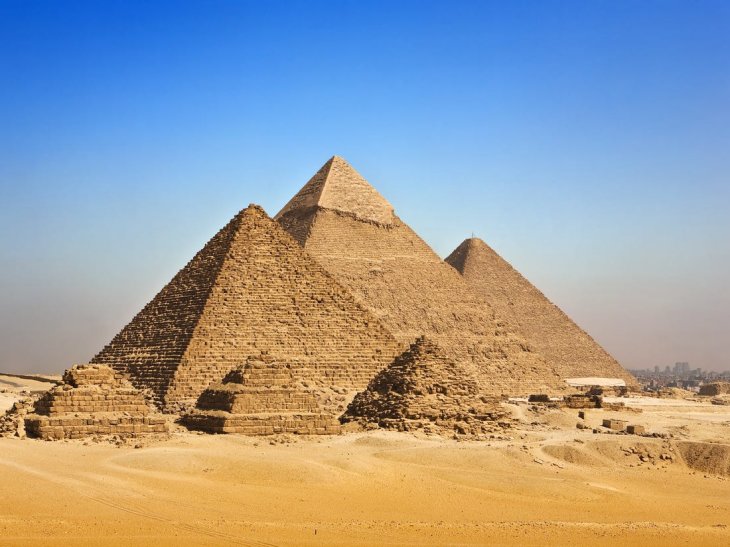
The Great Pyramid of Giza has been the world’s tallest structure for 3,800 years. It is also the oldest among the pyramids still standing in Egypt. However, you may not know about the role math plays in building this wonder.
The first unit to record length is the cubit and if we measure this pyramid’s perimeter in cubits, we will have 365.24, the total days of a year. And if we divide the perimeter by twice its height, the result is pi. Another interesting feature is that the measurements of the King’s Chamber follow the Pythagorean triangle.
Taj Mahal, India
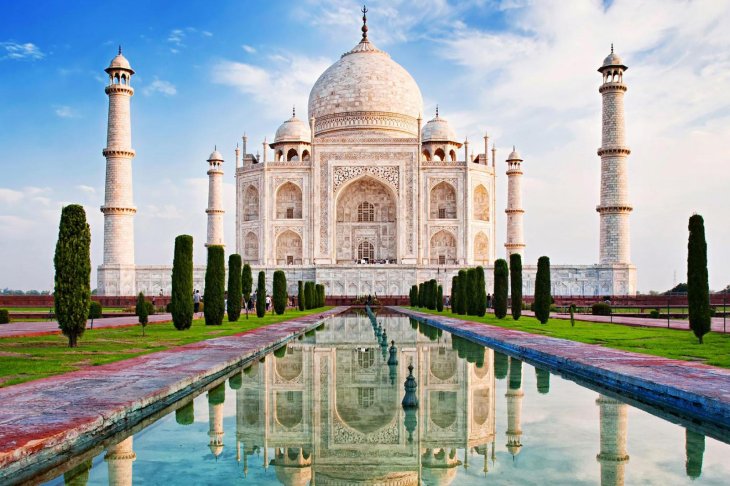
Taj Mahal is high on several travelers’ lists when they visit India. Many have made a long journey just to see with their own eyes the magnificence of the structure. However, in the eyes of a mathematician, the building is a prime example of line symmetry in architecture. There are two lines, one along the waterline and the other sits vertically down the middle of the structure, showing the prayer towers’ reflection in the water.
The Eden Project, The UK
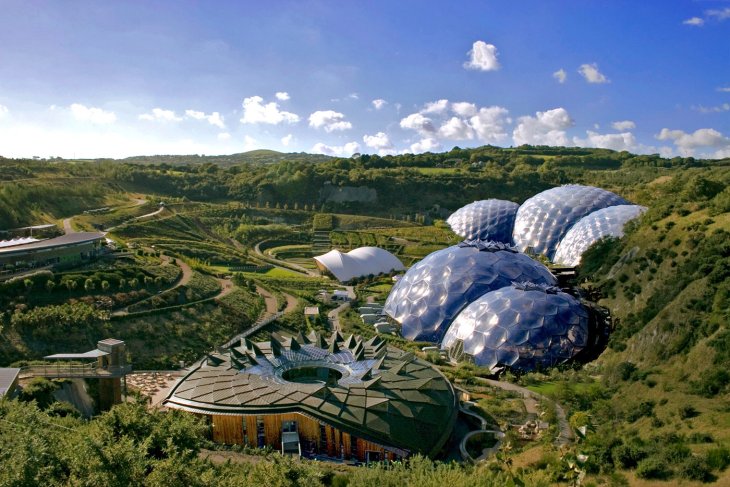
The Eden Project in the UK was opened in 2005 and since then, it has been one of the country’s most popular tourist attractions. While most people come to the site to see what it has on the inside, one may find the geodesic domes interesting too.
In 2005, an educational center called the Core was introduced and its design is based on the Fibonacci numbers, a choice made to reflect the nature of the center, which is to show visitors the relationship between humans and plants.
Look closely into the building and you will find even more math. The highlight is that the structure is derived from phyllotaxis, the basis for the growth of most plants.
Parthenon, Greece
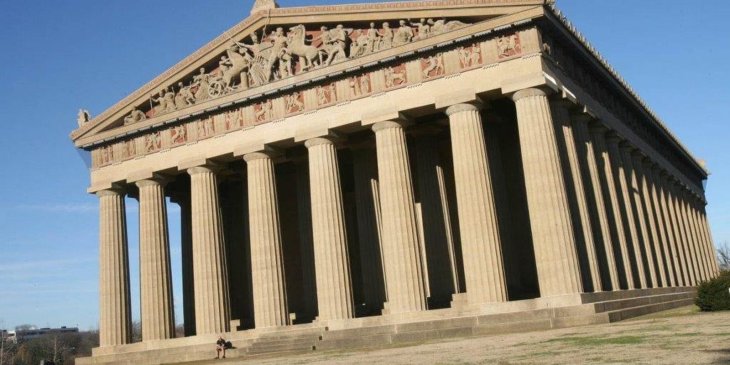
The Parthenon was built in 430 BC as a symbol of harmony so the Ancient Greeks have gone extra miles to make it looks perfect. Their effort is reflected by the structure’s ideal proportions. The ratio of width and height is 9:4, which also determines the horizontal and vertical proportions of the building and the building’s other relationships. A prime example of this ratio is the space between the columns.
It has been proven that the proportions of the Parthenon were designed based on the famous Golden Ratio.
The Ancient Greeks were quiet he experts in creating beauty. It shows in the fact that they made the columns a bit thicker ion the middle to offset the optical illusion created by all straight columns.
The Gherkin, The UK

The UK has another candidate on this list, the Gherkin building, which has a rather unusual look. The cylindrical shape plays an important part in minimizing the whirlwinds that we usually see at the base of big architectural structures. This phenomenon can be predicted using modeling based on the math of turbulence.
The bulging middle gives an illusion of a shorter structure, which does not block the sunlight. This kind of design can help with ventilation, which in turn saves lots of air conditioning, heat, and light bills.
The Gherkin was built using parametric modeling and CAD (short for Computer-Aided Design). It always ranks among the mosy distinctive buildings in London.
Chichen Itza, Mexico
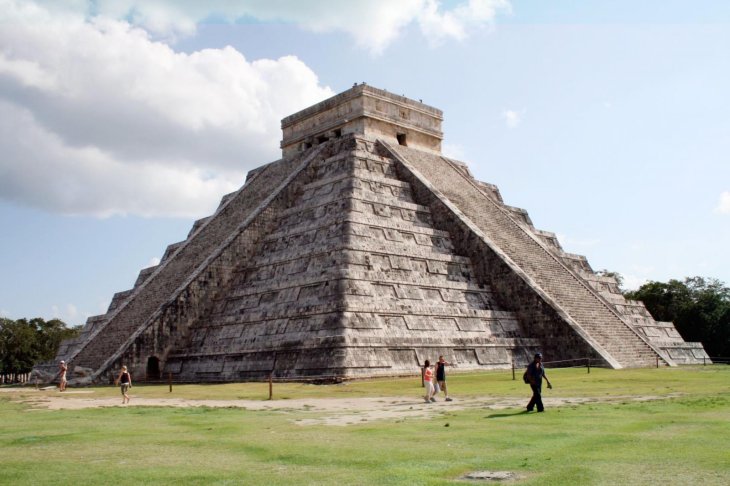
The Maya Civilization is renowned for its great contribution to math. One of them is the invention of zero in the counting system. The Chichen Itza is around 24 meters tall and the El Castillo within the building was built with the astrological system in mind.
On each side of the pyramid are 52 panels representing the total number of years in the Mayan cycle. The Chitchen Itza is divided into 18 tiers by stairways, which corresponds to 18 months in the Mayan calendar. The total number of steps in the El Castillo is the number of days in a year, 365, with each step represents one day.
Sagrada Familia, Spain

The Sagrada Familia in Spain is among the country’s hottest tourist attractions. The one who designed the building is Antoni Gaudi and his work is based on lots of interesting math. He made use of hyperbolic paraboloid structures which we can see within some façades.
The Passion façade of the Sagrada Familia shows a Magic Square where the sums of numbers on the diagonals, columns, and rows are the same number. In the case of this particular structure, the sum is 33.
Another interesting feature related to math is the Magic Constant
Guggenheim Museum, Spain
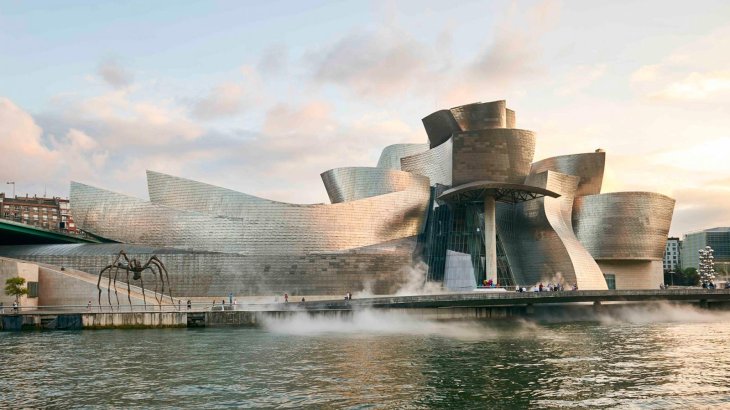
Bilbao might not be high on travelers’ lists when they pay a visit to Spain. However, the Guggenheim Museum alone is worth traveling to the city. Opened to the public in 1997, it has been one of the most important buildings of the 20th century. And just look at it, you will see the reason why.
The building is built to look like a fish with the titanium panels appear like fish scales. They may appear randomly placed but their positions are calculated by CATIA (short for Computer-Aided Three Dimensional Interactive Application).
With the help of math and computers, it is now possible to make the kinds of shapes that the earlier generations could only create in their imagination.
Philips Pavilion, Brussels, Belgium
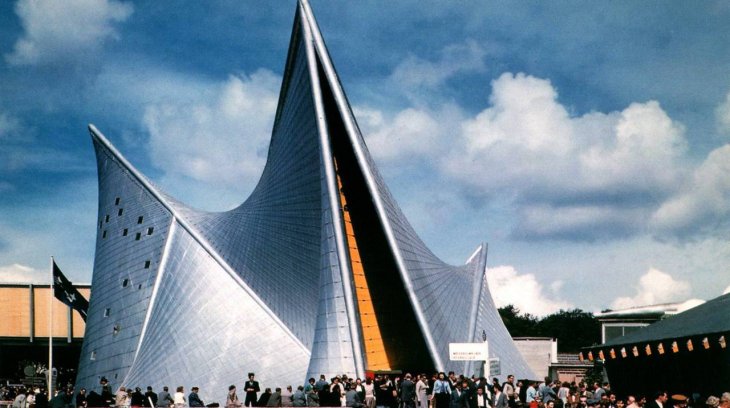
If you were at Brussels in 1958, you would notice the Phillips Pavilion. With the fund from Phillips, the pavilion was a collection of steel tension cables and asymmetric hyperbolic paraboloids. The building was built as a place to showcase the technological advancements after WWII ended.
>>> Microsoft Math Solver Will Save Indian Students From Math Phobia
Featured Stories

Features - Jul 01, 2025
What Are The Fastest Passenger Vehicles Ever Created?

Features - Jun 25, 2025
Japan Hydrogen Breakthrough: Scientists Crack the Clean Energy Code with...

ICT News - Jun 25, 2025
AI Intimidation Tactics: CEOs Turn Flawed Technology Into Employee Fear Machine

Review - Jun 25, 2025
Windows 11 Problems: Is Microsoft's "Best" OS Actually Getting Worse?

Features - Jun 22, 2025
Telegram Founder Pavel Durov Plans to Split $14 Billion Fortune Among 106 Children

ICT News - Jun 22, 2025
Neuralink Telepathy Chip Enables Quadriplegic Rob Greiner to Control Games with...

Features - Jun 21, 2025
This Over $100 Bottle Has Nothing But Fresh Air Inside

Features - Jun 18, 2025
Best Mobile VPN Apps for Gaming 2025: Complete Guide

Features - Jun 18, 2025
A Math Formula Tells Us How Long Everything Will Live

Features - Jun 16, 2025
Comments
Sort by Newest | Popular